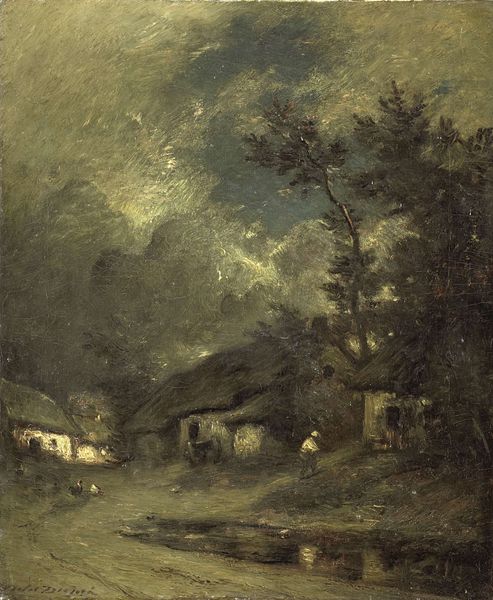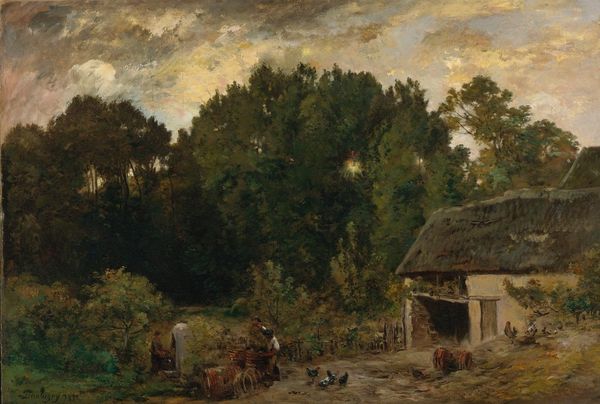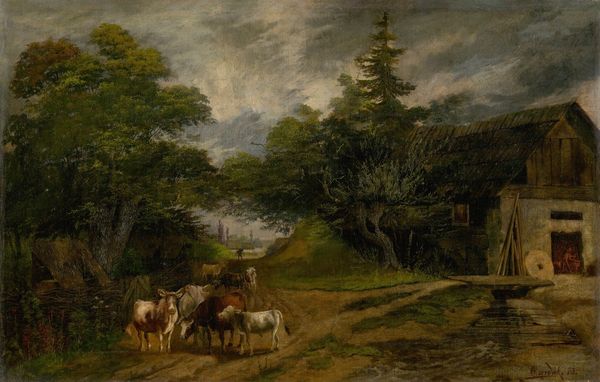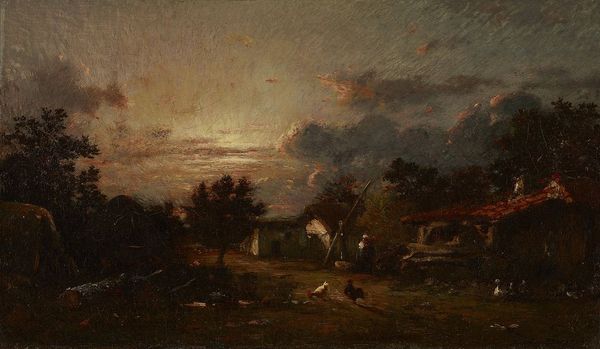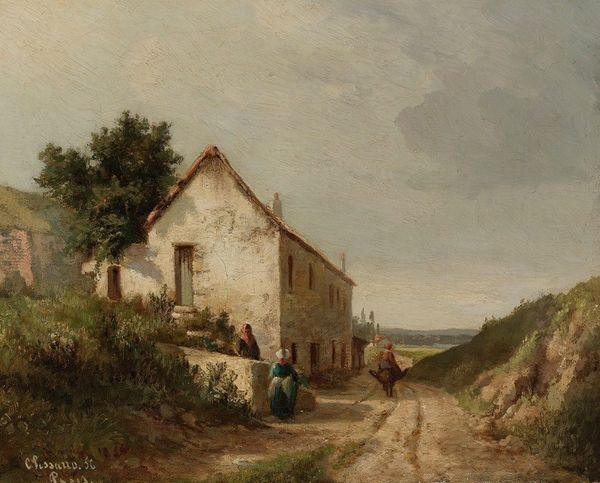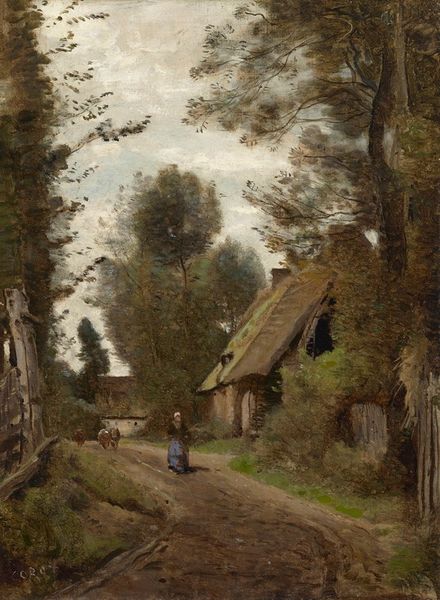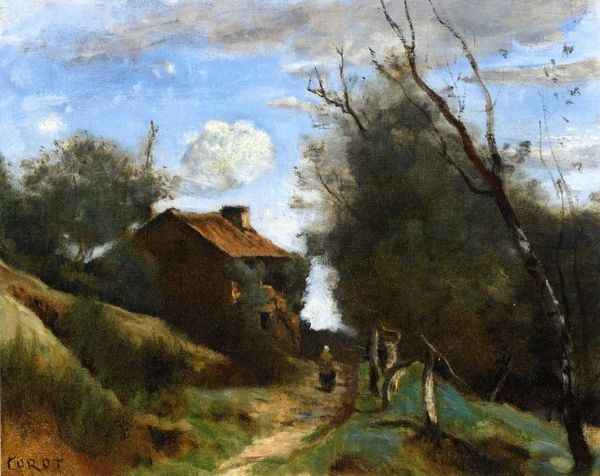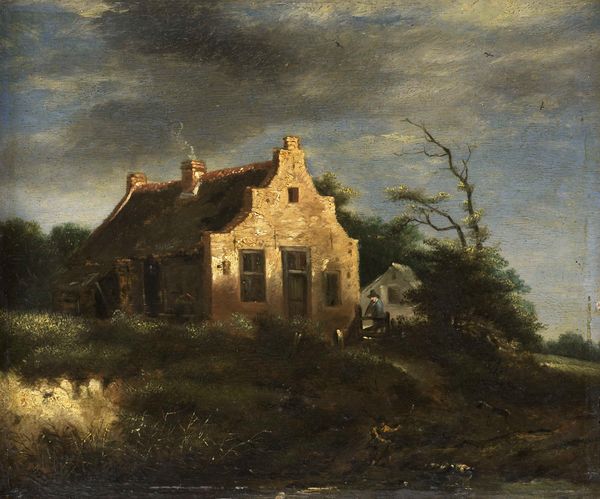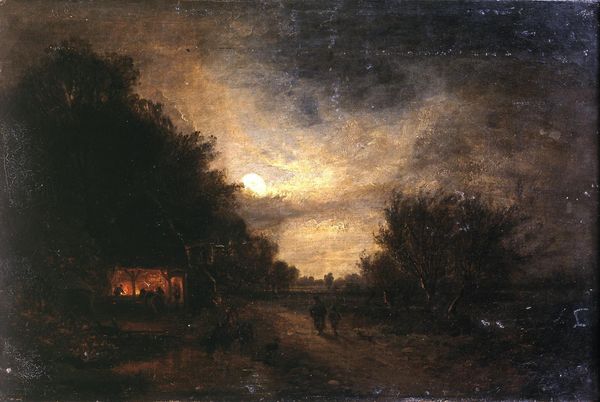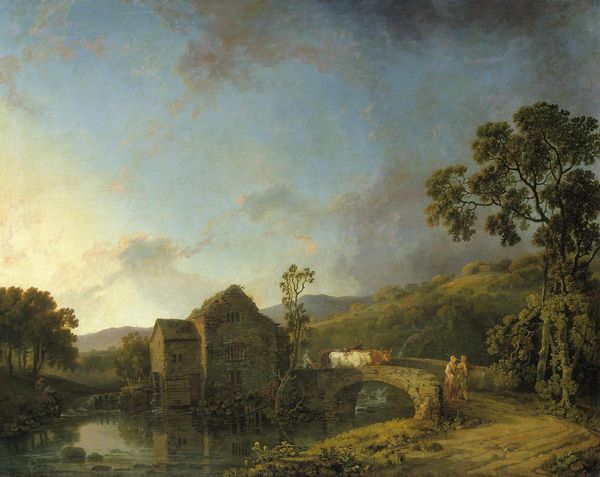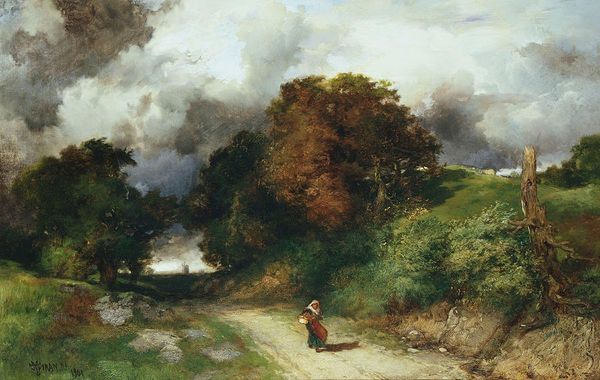
painting, oil-paint
#
painting
#
impressionism
#
oil-paint
#
landscape
#
impressionist landscape
#
oil painting
#
genre-painting
#
realism
Copyright: Public domain
Editor: So this is “The Passing Storm,” an oil painting, potentially undated, by Jules Dupré. I'm struck by the heavy impasto and how tactile it feels, you can almost feel the texture of the clouds. How would you approach interpreting a landscape like this? Curator: Let’s look at the materiality. The thick application of oil paint isn’t just about texture, but also the cost of the pigment, right? In a rural scene like this, painted perhaps outside the main salon, where does that wealth come from? Dupre's brushstrokes build not just an image, but an economy. It speaks of land ownership and access to materials in a pre-industrial, or early industrial context. Editor: That’s fascinating! I hadn’t considered the financial aspect of the paint itself. It adds a whole new layer to understanding what’s being presented in the painting. Curator: Exactly! Consider the labor embedded in the creation of the paint itself. Where did the pigments come from? Who processed them? These seemingly simple materials tell a deeper story about trade, labor, and resource extraction during the time this work was made, possibly impacting even the land it depicts. Is the figure presented in the painting laboring for themselves? What is the relationship between the figure in the field, the resources that they have access to, and the landscape? Editor: It really does highlight the connection between the artwork, the social conditions that made the work possible, and the content depicted, making it so much more layered than just a pretty landscape. Curator: Absolutely. We see how artistic production, like all production, is embedded in larger material and social realities. We also learn a lot from what he leaves out of the frame, which leads us to imagine what forces are looming but not visible. Editor: I'm beginning to see Impressionism as something far more complex than dappled light now. Thanks so much. Curator: My pleasure.
Comments
No comments
Be the first to comment and join the conversation on the ultimate creative platform.
